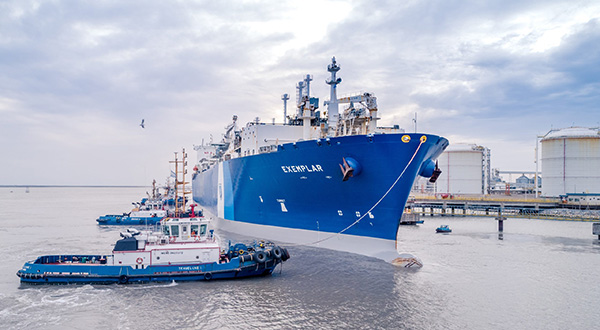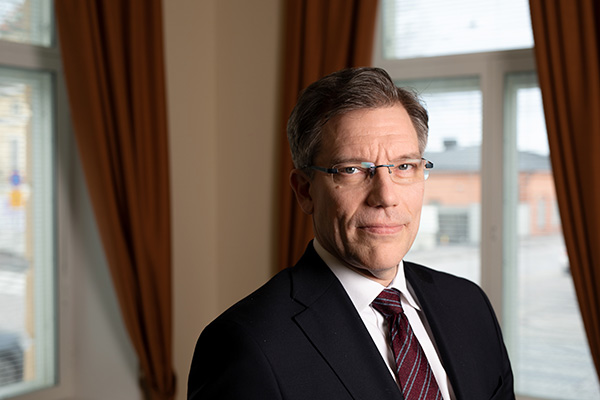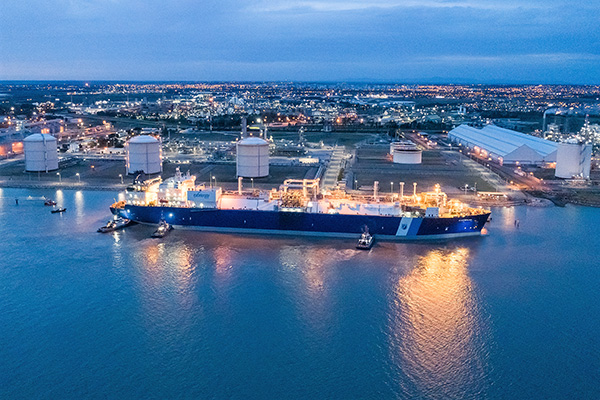Environment
Machinery
Ports
Floating LNG terminal in Inkoo will provide gas to Finland and Estonia

In December 2022, a floating LNG terminal is expected to arrive at Inkoo Port on the southern coast of Finland. With a storage capacity of 150,900 cubic metres, the LNG terminal vessel ’Exemplar’ will deliver liquefied natural gas (LNG) for the needs of Finnish and Estonian industries throughout the next ten years.
In May of this year, the Finnish energy
company Gasgrid Finland signed a lease
with Excelerate Energy, Inc. The lease is for
the terminal ship ’Exemplar’ for the duration of a decade, with the aim of having
the terminal available already next winter.
This development will provide
independence from Russian pipeline gas.
Formerly, Russian natural gas supplies
were routed through a pipeline via Imatra
but they were stopped in the spring of
2022.
Located to the west of Helsinki on
the southern Finnish coastline, Inkoo – the
terminal ship’s destination – already has
an optimal deep-water port at close proximity
to the pipelines distributing natural
gas mainly to industrial end-users in the
Baltic region.
The floating storage and re-gasification
unit (FSRU) ’Exemplar’ has a length
of 291 meters and a width of 43 meters.
The ship’s volume corresponds to approximately
68,000 tonnes of LNG when fully
loaded. This will provide approximately 1,050 GWh of energy content, or – with
refills – more than 40 TWh annually.

Mr. Riku Huttunen, Director General of the Energy Department of the Ministry of Economic
Affairs and Employment says that the crucial thing is to have the floating LNG terminal ready
for use for the oncoming winter. This is a critical precautionary measure for the energy security
both in Finland and in Estonia.
photo: ALEKSI MALINEN / TYÖ- JA ELINKEINOMINISTERIÖ
The ’Exemplar’ was built in South
Korea and completed in 2010. She is
equipped with Kawasaki’s 26,500 kW gas
turbine engine. The Texas-based Excelerate
Energy acquired the ship in 2017. Before
setting course to Inkoo, the ship was stationed
in Argentina.
Once the floating terminal is in position,
smaller LNG tankers are expected to
visit and refill it two to three times every
month.

URGENT NEED FOR
NEW GAS SOURCES
The Government of Finland started to prepare
for the termination of pipeline gas
supplies in April 2022. The tasks of leasing
a suitable LNG terminal and taking
care of all related practicalities were delegated
to the state-owned gas grid company
Gasgrid
Finland.
As Russia has proved to be an unreliable
energy supplier, new sources for
natural gas are required absolutely and
urgently.
Of the total annual energy usage in
Finland, the share of natural gas is approximately
five percent. In particular, natural
gas is needed for industrial processes, CHP
energy production, and heavy traffic. However,
the floating terminal will also secure
gas supplies for households that use natural
gas.
The terminal ship will essentially
be utilised as an anchored LNG terminal
where the liquefied natural gas is re-vaporised
into gasefied state and then supplied
into Gasgrid’s transmission grid. While the
’Exemplar’ remains technically a ship, she
becomes a movable part of the gas-supply
infrastructure, operating as sort of a
transformer unit.
Part of the re-gasified natural gas
will be routed to Estonia, through the
existing pipeline connection. The total
costs of the floating terminal for the
10-year usage period are estimated to
be approximately 460 million euros, with
some additional costs depending on the
usage volumes.

A CRUCIAL MEASURE FOR
AVOIDING GAS SHORTAGES
Mr. Riku Huttunen, Director General of
the Energy Department of the Ministry of
Economic Affairs and Employment in Finland,
confirms that the floating LNG terminal
is expected to be in use in Inkoo in
December 2022.
”The terminal ship will fulfil the
needs of the industrial natural gas users
in Finland. Since May 2022, our country
has received natural gas solely through the
Balticconnector pipeline.”
”Thus far, those supplies have been
sufficient. However, if we had no floating
LNG terminal ready for use this winter, we
would run the risk of industrial gas shortages,”
Mr. Huttunen notes.
He adds that the increased gas supplies
also have an effect on the gas prices
and electricity production.
”For the LNG terminal ship, Finland
and Estonia have signed a memorandum
of understanding. According to this document,
the expenses of the terminal will
be shared between the countries, divided
in accordance with a ratio determined by
the gas usage – that is, 80 percent for Finland
and 20 percent for Estonia.”
”The floating terminal will provide
natural gas for the shared market.
So far, Estonia has not yet provided the
terminal company with equity, and consequently
Finland has for the time being
financed the project as a whole via Gasgrid
Finland Oy,” explains Huttunen.
As a precaution and in order to
secure future gas supplies, Finland and
Estonia had previously agreed that both
countries should be prepared for the arrival
of a gas terminal ship supplying natural
gas for the shared fuel market. In Estonia,
Paldiski Port is an optional site for the
terminal ship.
In the larger Baltic region, a similar
type of floating LNG terminal has already
been stationed in Klaipeda in Lithuania
where it has been operational for a number
of years.
”The crucial thing is to have the
floating LNG terminal ready for use for
the oncoming winter. This is a critical precautionary
measure for the energy security
both in Finland and in Estonia,” Mr.
Huttunen emphasises.
by: Ari Mononen



